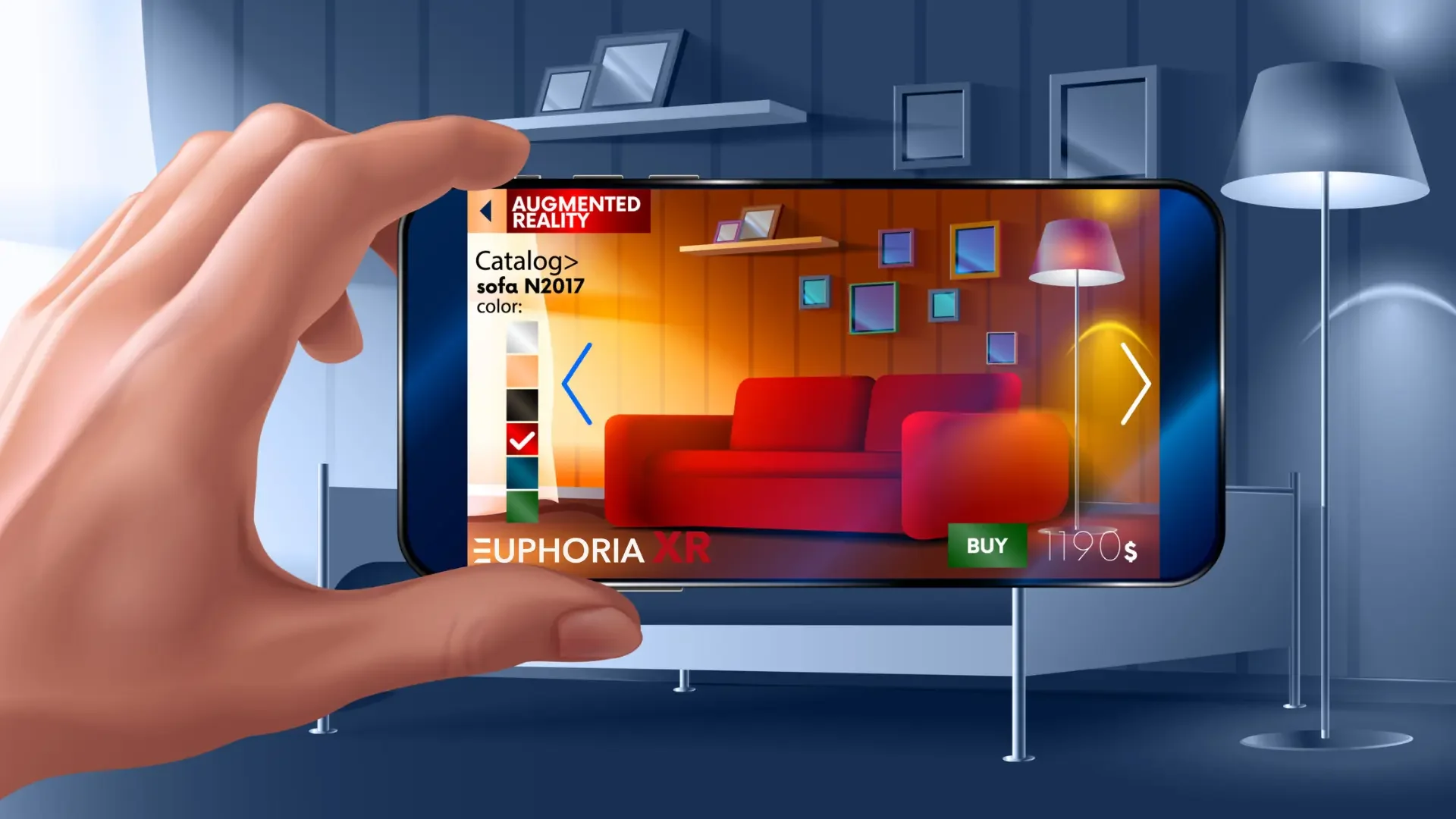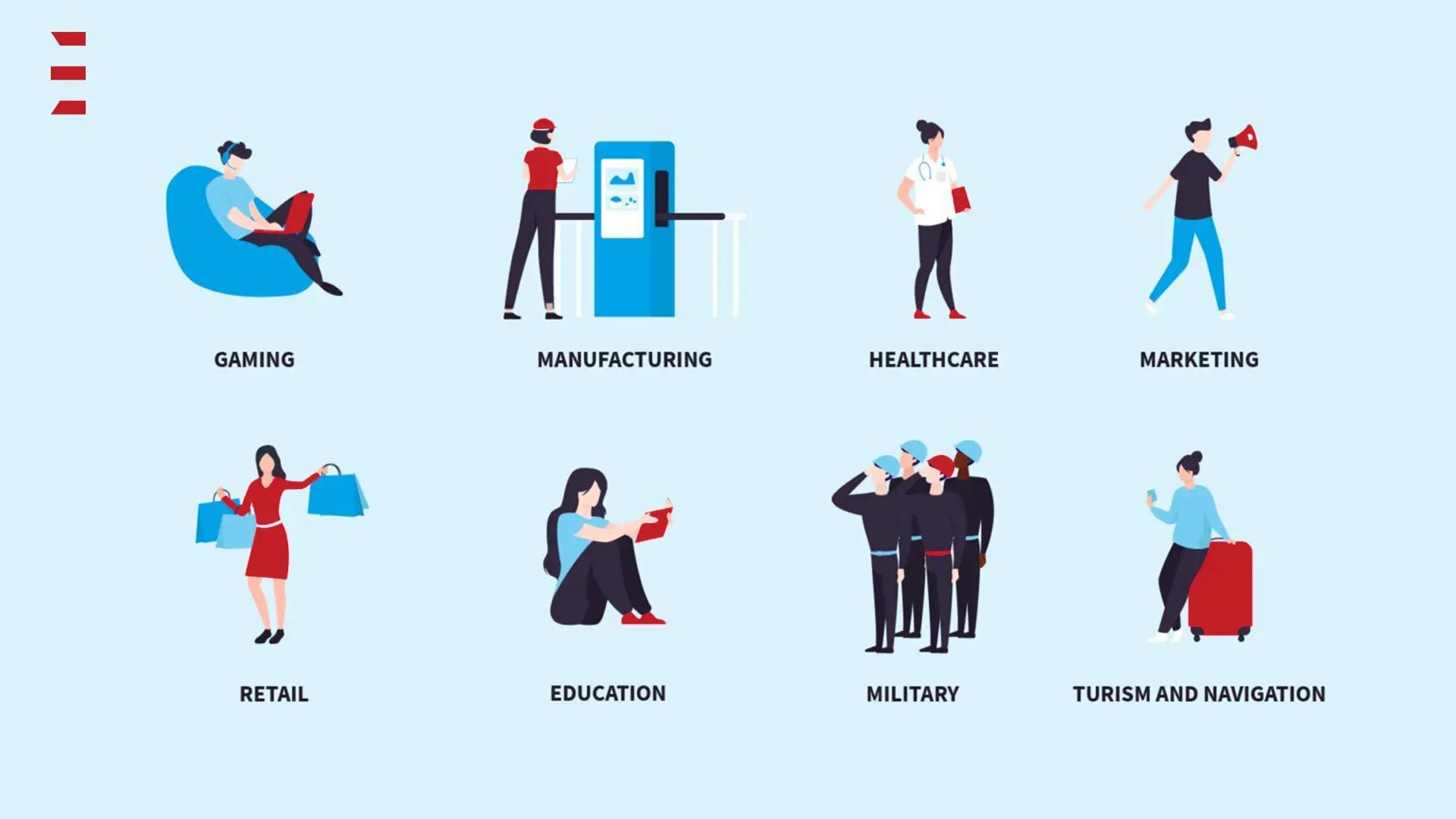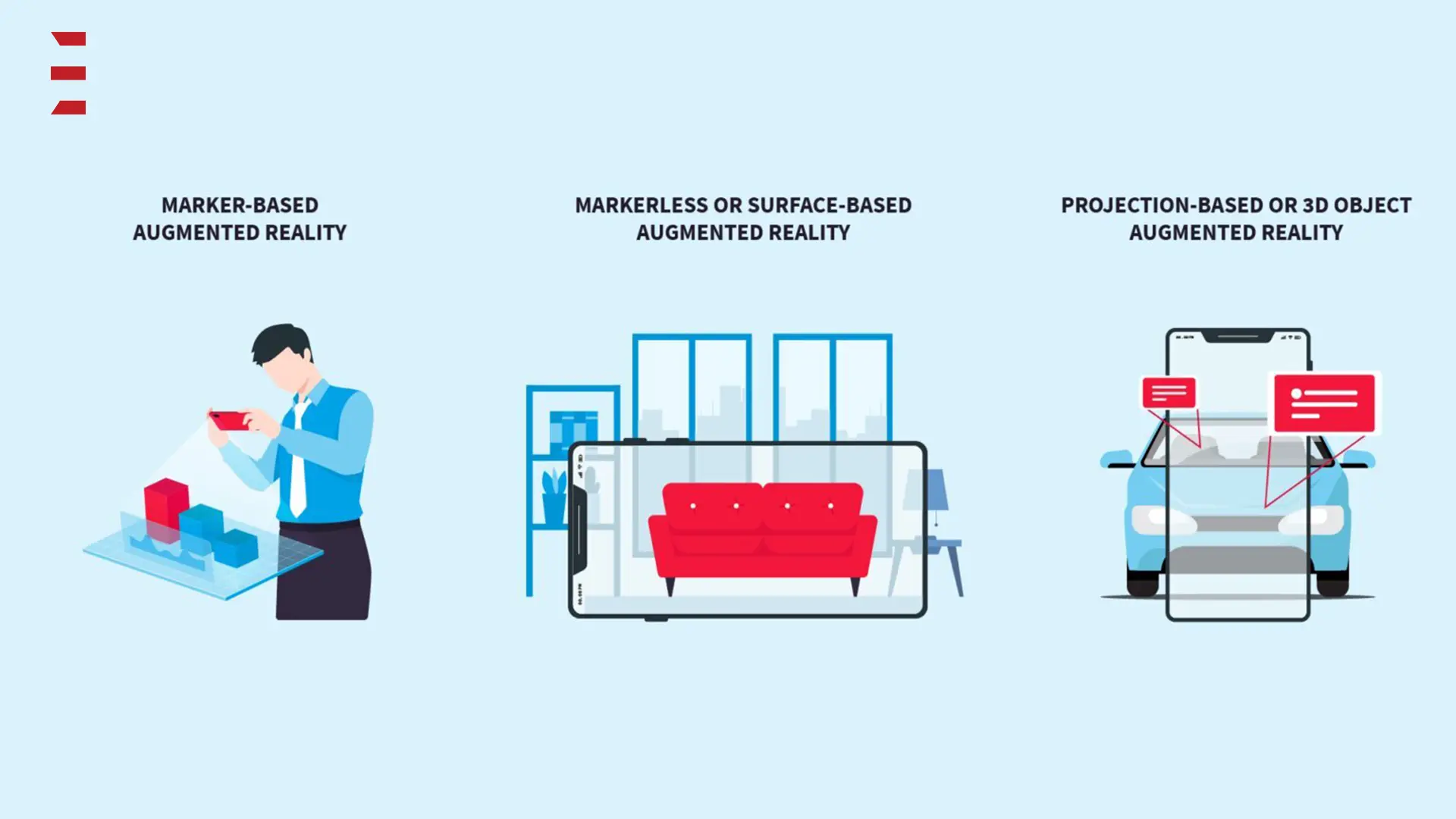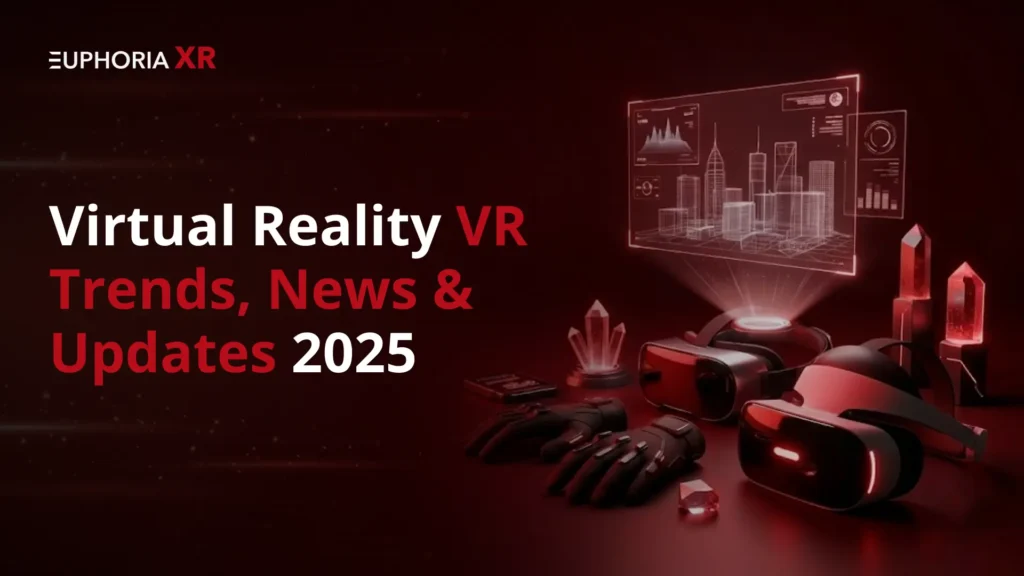Technologies that once seemed futuristic in movies are now essential in today’s competitive market. Augmented reality (AR) is one of these transformative tools, with the power to change how we approach marketing, interact with products, improve services, and see the world. Major companies like Apple, Google, Facebook, Samsung, and Sony heavily invest in AR development in software and hardware.
A report by Grand View Research estimated the global AR market at $17.67 billion in 2020, and it is expected to grow to $26.75 billion by 2021. By 2028, this number could reach $340.16 billion, with a strong annual growth rate of 43.8%. This rapid growth is due to the many benefits AR offers and the new opportunities it creates across various industries. The future of AR and VR is set to significantly impact our everyday lives, with AR trends continuing to shape the market well into 2024 and beyond.
Partnering with an AR development company is key to staying competitive. Our AR expertise can help create innovative solutions tailored to business needs, providing a strong advantage in any industry.
What is Augmented Reality (AR)?
Augmented Reality (AR) enhances our perception of the physical world by overlaying digital content such as images, sounds, and text onto real-world objects and environments. Unlike Virtual Reality (VR), which creates a completely immersive virtual environment, AR integrates digital elements into the real world, allowing users to interact with both simultaneously.
How AR Works
AR systems rely on several key technologies:
Sensors and Cameras: These capture and interpret the user’s surroundings, providing the data needed to overlay digital content accurately.
Processing Power: This component analyzes the sensor data to determine where and how to place digital elements within the physical space.
Display Technology: The final augmented content is projected onto a screen, whether a smartphone, tablet, or AR glasses.
These elements enable AR devices to superimpose digital information onto the physical world, creating an interactive and immersive experience.
3 Types of AR Applications
1. Marker-Based AR Applications
Marker-based AR utilizes visual markers, such as QR codes or specific images, to trigger the display of augmented content. When the AR device’s camera detects these markers, it overlays digital information on top of them. This method is simple and often used for interactive advertisements, educational content, and packaging.
Example: A museum guide that displays additional information or interactive 3D models related to an exhibit when a marker on the exhibit is scanned.
2. Markerless Surface-Based AR Applications
Markerless surface-based AR, known as location-based AR, operates without predefined markers. Instead, it uses sensors and cameras to detect and map environmental surfaces and objects. This method allows for more dynamic and contextually aware interactions, making it ideal for applications in home design, navigation, and more.
Example: An AR app for home renovation that visualizes how different paint colors or furniture items would look in a room by scanning the surfaces within the space.
3. Projection-Based Augmented Reality Applications
Projection-based AR involves projecting digital images or information onto physical surfaces. This approach creates interactive displays by transforming everyday surfaces into dynamic visual interfaces. It is commonly used in public spaces, events, and exhibitions.
Example: A retail store where digital price tags and product information are projected onto the floor or shelves, enhancing the shopping experience.
AR App Development Technologies and Tools
Creating effective AR applications involves various technologies and tools:
AR SDKs (Software Development Kits)
AR SDKs provide the essential frameworks and libraries for developing AR applications. Some prominent AR SDKs include:
ARKit: Apple’s framework for developing AR applications on iOS devices. It offers features like motion tracking and scene understanding.
ARCore: Google’s counterpart for Android devices, providing tools for motion tracking, environmental understanding, and light estimation.
Vuforia: A versatile AR SDK that supports iOS and Android, allowing for advanced image recognition and tracking.
Looking for top-notch Virtual Reality (VR) services? Euphoria is here to help. As a dedicated VR development company, we create immersive and interactive VR experiences tailored to your needs. Whether you are looking for innovative solutions for entertainment, training, or any other application, our team has the expertise to deliver high-quality results. Check out our VR development services.
3D Modeling Software
To create compelling AR content, developers use 3D modeling software to design and animate digital objects and environments. Tools such as Blender, Maya, and Unity facilitate the creation of realistic 3D models and animations that can be integrated into AR applications.
Computer Vision
Computer vision plays a crucial role in AR by enabling devices to recognize and interpret visual data from the real world. This technology supports markerless and projection-based AR applications by allowing devices to understand and interact with physical objects and spaces.
SLAM (Simultaneous Localization and Mapping)
SLAM technology is important for spatial AR applications. It helps create detailed maps of an environment while tracking the device’s location. This capability ensures accurate placement and interaction of digital content about the physical world.
Industries that Invest in AR App Development
AR app development is making significant developments across various industries, enhancing processes, customer experiences, and operational efficiencies. Here’s a look at how different sectors are using AR technology:
1. Gaming
The gaming industry has been at the forefront of AR innovation, creating immersive experiences that blend digital and physical realities. Games like Pokémon GO have demonstrated the potential of AR to captivate players and create engaging, interactive worlds.
2. Retail
In the retail sector, AR is transforming how consumers interact with products. Features like virtual try-ons, interactive product displays, and augmented shopping experiences enhance customer engagement and satisfaction.
Example: The IKEA Place app lets users visualize how furniture would look in their home before purchasing, improving the buying decision and reducing return rates.
3. Education
AR applications in education provide interactive and engaging learning experiences. AR facilitates a deeper understanding of complex subjects and concepts by overlaying digital content in textbooks, classrooms, and physical objects.
Example: AR educational apps can animate historical events or provide interactive anatomy lessons, making learning more engaging and memorable for students.
4. Manufacturing
AR is used in manufacturing for training, maintenance, and assembly processes. AR applications can overlay instructions and visual guides directly onto machinery or assembly lines, improving accuracy and reducing training time.
Example: Boeing has implemented AR to assist technicians with wiring complex aircraft systems, significantly reducing assembly time and improving precision.
5. Healthcare
Healthcare benefits from AR technology in various ways, including surgical planning, medical training, and patient education. AR tools can provide real-time data and visualizations during procedures, enhancing precision and improving patient outcomes.
Example: AR applications in surgery can project critical information onto a patient’s body, helping surgeons navigate and perform complex procedures more accurately.
6. Military
The military uses AR for training simulations, tactical operations, and situational awareness. AR enhances the ability to visualize and interact with complex environments, improving training effectiveness and operational decision-making.
Example: Soldiers’ AR headsets can display real-time battlefield data and overlays, aiding navigation and enhancing situational awareness during missions.
7. Marketing
In marketing, AR creates engaging and interactive campaigns that capture consumer attention. AR experiences can include virtual product demonstrations, interactive advertisements, and immersive brand interactions.
Example: Coca-Cola’s AR campaigns allow customers to interact with virtual characters and play games, creating memorable brand experiences and increasing customer engagement.
8. Tourism
Tourism benefits from AR by offering interactive guides and location-based information. AR can enhance the travel experience by providing augmented details about historical sites, landmarks, and local attractions.
Example: AR apps can offer virtual tours of historical sites or overlay information about landmarks, enriching the travel experience and providing additional context.
9. Navigation
Navigation improves with AR by overlaying directions and points of interest in the real world. This technology makes it easier for users to find their way and explore new areas with visual guidance.
Example: AR navigation apps can display real-time directions and highlight points of interest, making it easier for users to navigate unfamiliar locations and discover new places.
AR Trends 2024 and Beyond
As we look to the future, several AR trends are expected to shape the development and adoption of AR technology:
Enhanced User Interfaces
Future AR applications will feature more intuitive and immersive interfaces. Advances in gesture recognition, voice commands, and eye-tracking technology will create more natural and engaging interactions.
Integration with AI
Combining AR and Artificial Intelligence (AI) will result in smarter and more adaptive applications. AI can analyze user behavior and environmental data, delivering personalized and contextually relevant AR experiences.
Increased Adoption Across Industries
As AR technology matures, its applications will expand across various sectors. More industries will adopt AR to improve processes, enhance customer experiences, and drive innovation.
Improved Hardware
Advancements in AR hardware, such as lighter AR glasses and enhanced spatial sensors, will improve user experiences and broaden the potential applications of AR technology.
The Bottom Line!
With the number of mobile devices worldwide projected to reach 17.72 billion by 2024, the demand for AR apps is set to rise significantly. Augmented reality offers numerous benefits across various industries, and its adoption is expected to grow steadily. According to Gartner, by 2022, around 70% of enterprises will be exploring immersive technologies for consumer and business applications, with 25% already integrating them into production. AR is a transformative technology that can immediately and substantially impact nearly every aspect of business, driving successful digital transformation.
If you are interested in AR app development or VR solutions, the experts at Euphoria XR can provide consultation and help you turn your ideas into market-ready products.
















